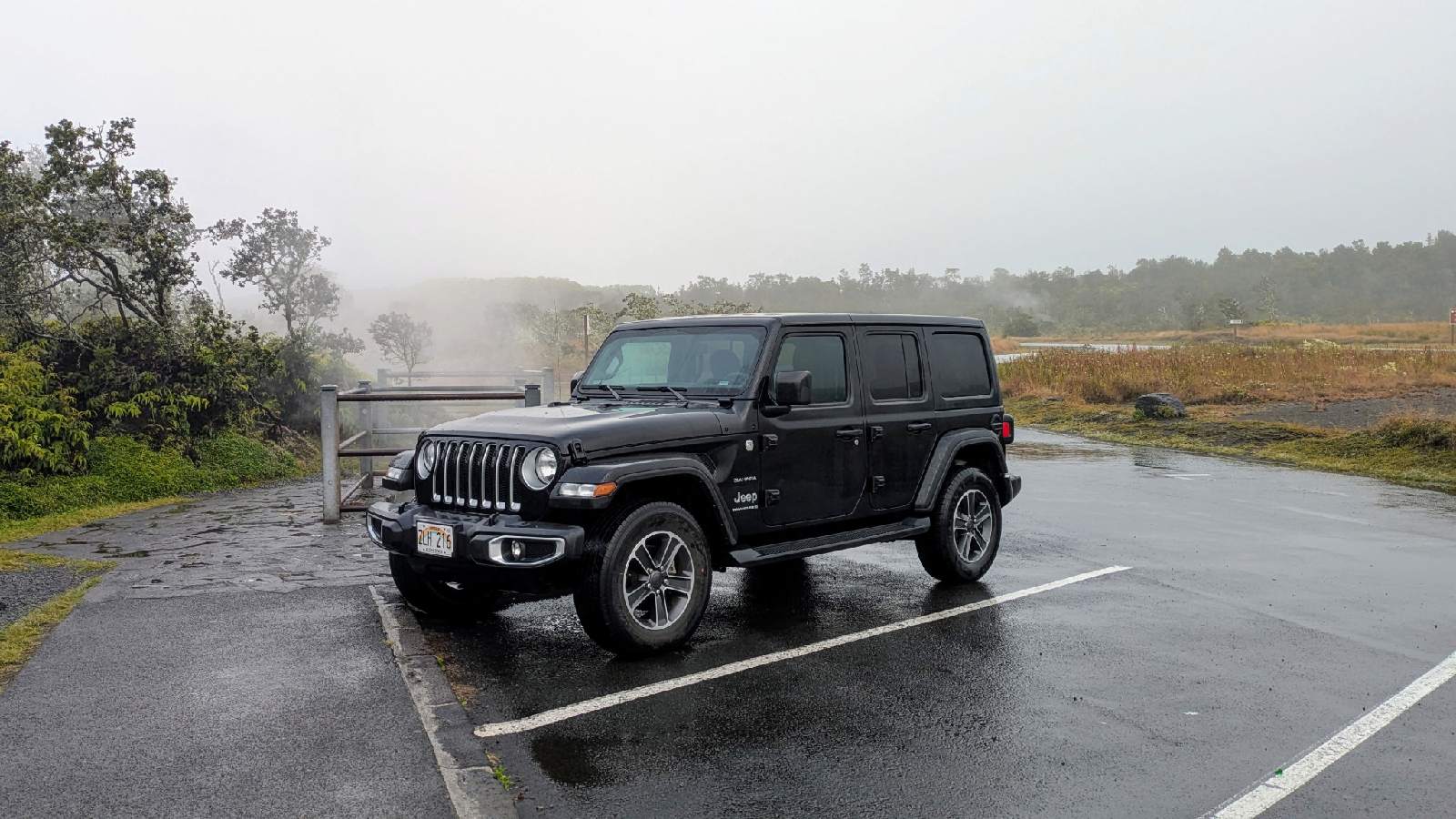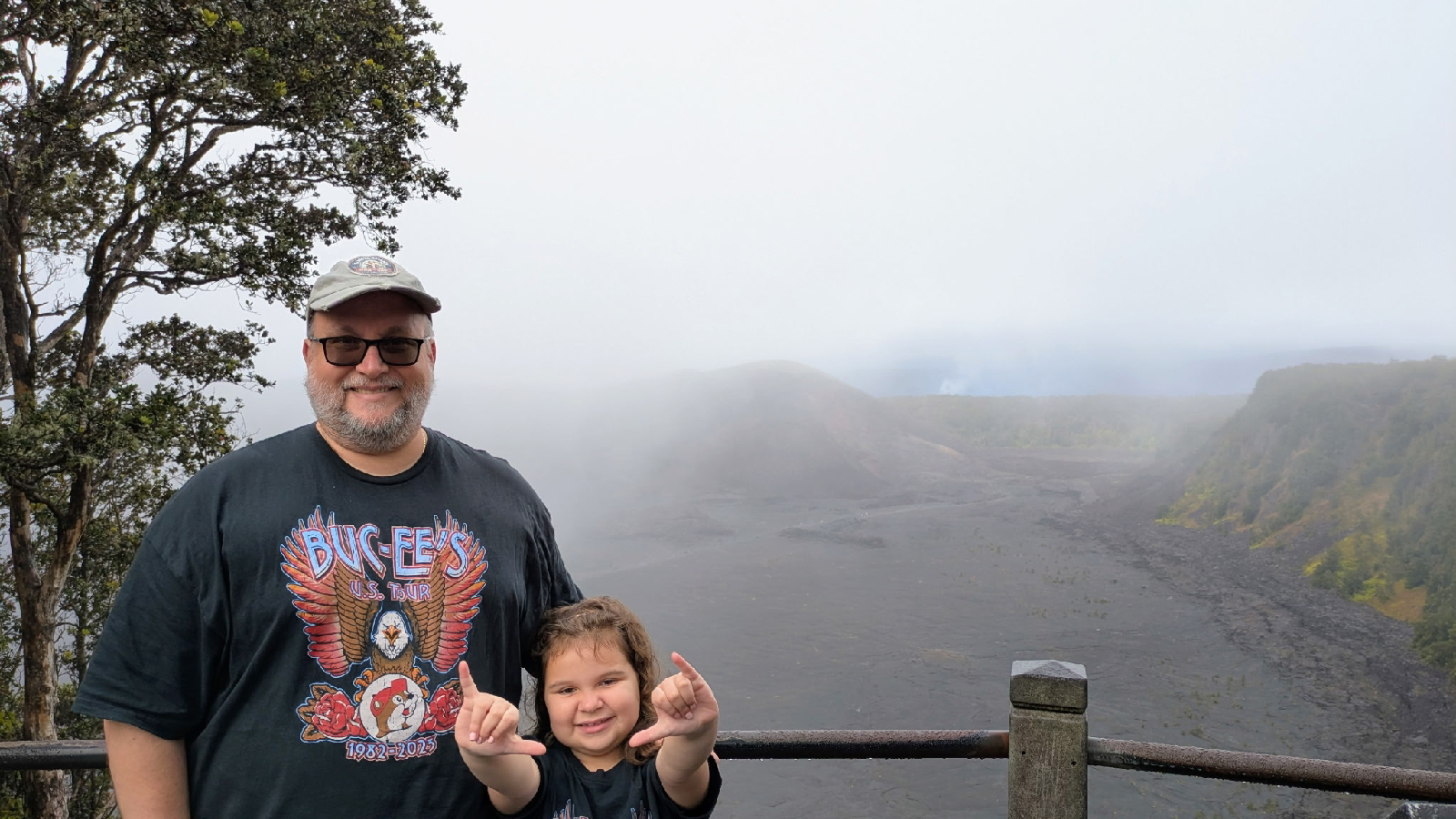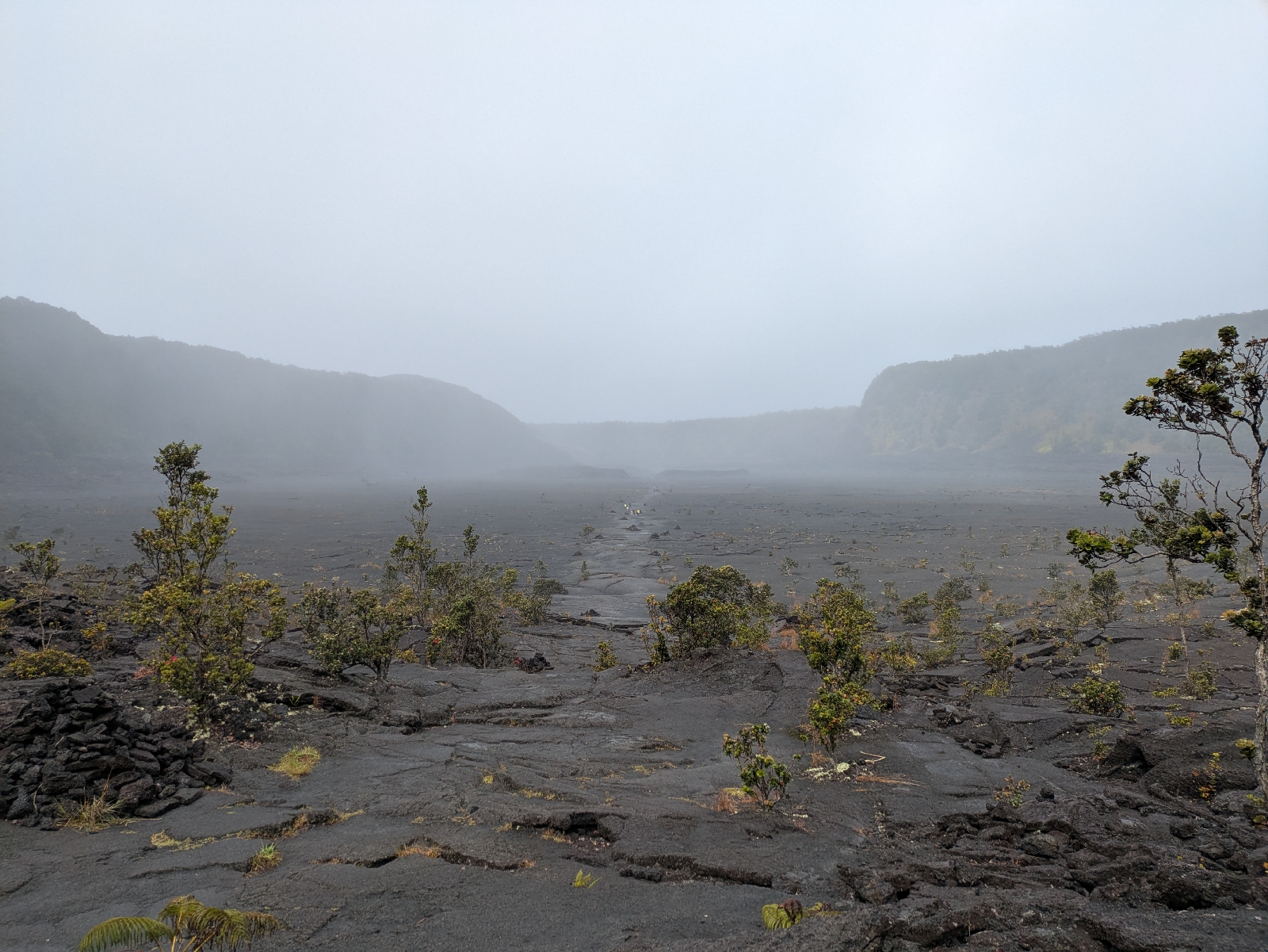Above, our Airbnb and below the backyard overlooking a golf course and some of the neighbors.
Our Airbnb was about 5 minutes from the park entrance and we were at the park a little after 7, so needless to say we beat the crowds. The other advantage of getting to the park super early is we didn't have to pay the $30 entrance fee. There was a QR code at the gate to scan to pay but we wanted to purchase an annual national parks pass so we would have to go to the visitor center to buy it. Ironically, later in the day when we got to the visitor center they told us we can only buy that pass at the gate!
Our first stop was a series of steam vents where basically steam comes up from holes in the ground. The steam is created as ground water seeps down to rocks heated by magma deep underground. The rocks are so hot that it vaporizes the water, returning it to the surface as steam.
Our next stop was Thurston lava tube. We were extremely fortunate to get here the time of day that we did. We were here years ago and we recall that the Thurston lava tube was the busiest place on the island that we encountered even busier than all the beaches! But at this time of day we had it completely to ourselves.
Lava tubes are formed when magma flows beneath the hardened surface of an active flow. As the lava flows away from the point of eruption, the lava generally stays hot while it's surface cools. This creates a crusted surface that encases the channel. As the neighboring lava cools these channels can get thick enough to form an insulating tube as an outlet for the flowing magma. When the lava flow stops and the last of it passes downhill, a lava tube cave can be formed. These tubes can be a few feet high stretching for miles with high ceilings.
After leaving the lava tube, we stopped at an overlook to look at Iki, which is a pit crater that is next to the main summit crater of Kilauea. It is not where the volcano is actively erupting. It is known for its eruption in 1959 when lava fountained up to 1900 feet and a lava lake formed in the crater. Today, the surface of the lava lake has cooled and a hiking trail crosses the bottom of the crater. After snapping a few pics at the top of the crater we would walk down to the bottom.
Of course to get to the bottom of the crater, you have to hike down. The trail drops about 400 ft via mostly switchbacks through a lush forest before putting you on the crater floor completely out in the open. Lucky for us it was overcast and still early in the morning so the sun was not an issue. The amount of devastation on the crater floor is pretty impressive for something that happened 65 years ago. We did get a chance to see quite a few ʻōhiʻa lehua, a flowering tree that Sofia had read about. Not only is it the state tree of Hawaii but is also one of the first plants that takes root in lava after it's cooled.
Our last stop would be the very crowded visitor center to pick up Sofia's Junior ranger activity book, which we would finish in the next day or two.






















No comments:
Post a Comment